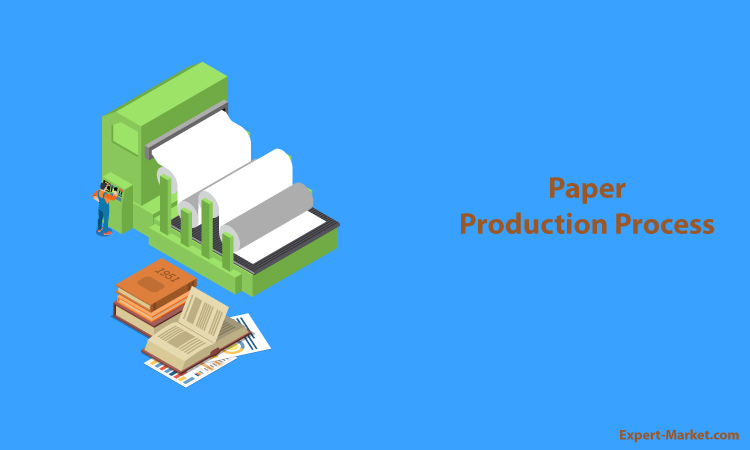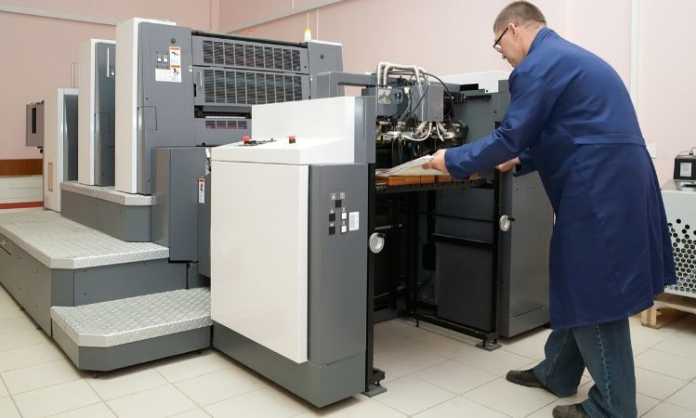Paper is one of the most produced products in the world. Since our childhood we have been surrounded by paper and its various products whether a textbook, cardboard, newspaper, paper boxes or other such products.
Once in a day we definitely use something that is made from paper. Since the consumption is so huge the production is also at a very large scale. China, United States of America and Japan are the three top producers of paper in the world. The scale of production is huge and due to its sale billions of dollars are earned every year.
Paper production and its making creates huge employment all over the globe. Its making requires machines, factory, pool of labors and technicians. It is not very hard to start a paper production mill but it does requires a lot of planning.
Read more:- Paper Mill Business Plan Sample
United States is one of the biggest consumer of paper products. It had a consumption of 97.3 million tons of paper in 2016. As of 2016, there were 450 paper mills in the United States that had a total revenue generation of $68 billion.
United States is also a leading exporter of paper products like pulp, paper and paperboard mill products that accounted 7809 million USD of exports in 2019. Converted paper products were exported at worth of USD 6299 million in 2019.
Production of paper happens at a very large scale in big factories owned by giant paper suppliers. Though it also happens at small scale depending upon the supply and capital investment. Though many giant companies use various methods of production for producing various types of paper but the common basic method remains the same for almost all types of paper.

An Overview of Paper Production:
As we know that paper is produced by cellulose which is extracted from the woods. Wood is processed to produce paper pulp which after further process is converted into paper sheets. In precise terms there are some steps following which the ready to use paper is produced. Here are the following steps.
- The Pulping Procedure
- Refining Procedure and Dilution Process
- Wire Section or Formation of Fiber
- Pressurization in order to increase Material Density
- Process of Drying
- Final Finishing Process
Overall there are total 6 steps after which paper is produced for usage. Though some of the process vary in some places but the fundamental process remains the same.
The Raw Material:
A majority of paper making companies rely heavily on wood as the basic raw material that is especially harvested for paper making. Spruce, Pine, Fir, Hemlock and Larch are some of the common trees whose woods are used as raw material for paper making.
Apart from wood, fibers of wood that come from sawmills, wood scraps, recycled cloths, some vegetables and recycled newspapers are used to make papers. With the progress in scientific discoveries and enhancement of technology, now almost all kinds of woods can be used for paper making. Some other raw materials apart from woods that are nowadays used are bamboos, flax, sugarcane bagasse, jute fibers and hemps.
Linen rags and cotton are used to make some fine quality papers used as letter heads. Some other materials that are used are dyes, bleaches, inks, sizing such as gum, starch and rosin and fillers such as titanium oxide, clay and chalk.
The Pulping Procedure:
Pulp is made both using wood and used papers. In the first scenario, wood logs are tumbled in drums in order to remove the bark. Then the logs are sent into a grinder where it is made into small pieces that are called chips.
Next is the process of making pulp from chip. Here, the wood chip is treated with several chemicals like bleach, hydroxide and sodium sulfide. Filter is used to remove unwanted materials. The chemical process requires cooking the wood chips using chemicals in a big boiler like container at an adequate pressure.
The wood material is boiled or cooked in a boiler for some time at a particular temperature in order to produce pulp. The pulp has its own impurities that are removed after refining. Here, the level of refining depends on the type of paper you want to produce.
After a brief process of cooking, the wood is turned into pulp which is ready to be sent for paper making process.
In case of old paper that are recycled, the method is a bit different. Here, the paper is cut into very small pieces and then it is mixed with chemical water. Inks, some other materials on paper, and other such impurities are removed using this process.
The pulp is thoroughly cleaned and chemicals are mixed to remove inks. Only when the pulp is cleansed properly it is sent for the next process.
The Refining and Dilution Procedure:
Refining procedure means cleaning of the wooden material in order to create pulp material which can be used for paper making. Since woods contain their own impurities and other materials that may affect the quality of paper therefore such materials are removed using chemical process.
In this, during the time when the wooden chips are ready to be boiled, several chemicals are used in order to filter the impurities. Steam is used to remove the foreign materials. This is an ongoing process which takes several hours.
Other methods are also used in order to make paper which doesn’t absorbs inks. This is called the process of sizing involves usage of rosins and gums that are used to ensure that the paper doesn’t absorbs ink.
Generally a paper can absorb ink and therefore one cannot use it for printing and writing purpose. Apart from this, chalk, clay and titanium oxides are used as filters to further treat the pulp mixture.
Wire Section and formation of Fiber:
The pulp that has been produced is now treated in order to create the dry fibers which later on will become paper. A long belt is used on which the pulp is laid. Using rollers and dryers the pulp is compressed in order to increase the density and to remove maximum water from it.
Process of Pressurization and Drying:
The belt keeps on moving and is passed through the roller drums and vacuums along with dryers. The belt is made like a wire on which the pulp is rolled. The vacuum machine removes the water in the pulp while the roller drum flattens the pulp increasing its density.
Dryer is used to further dry the paper making it thin and crisp sheet. The pressing of the pulp takes place that removed maximum water, makes the pulp dense and intervened and increases the density.
Later the last stage of drying takes place that removes almost all the water contained in the pulp or paper sheet. Temperature of 130 degree Celsius is used to dry the paper which removes 85% of the water.
Hot steam air is passed through the rolls of sheet in order to make it dry. Close to 70 cylinders are used in order to dry the paper. The paper is rolled on a long roller into various layers. And it is stretched in order to remove the remaining water.
Final Finishing Process:
Starch and other chemicals are used to make the paper for regular use. Starch increases the stiffness of paper and increases the bonding. It adds value to the paper. Rollers are used to smoothen the surface of the paper.
Many other chemicals are used to improve the quality of the paper. There are various machines as well that are used to improve quality. Finally the paper is rolled into jumbo reel which can wait up to 50 tones.
As per the need the paper is cut into sizes for various purpose.
Dust Collectors of Paper Industry:
Paper dust generated from paper making industries have severe implications on health especially respiratory health. There are multistar dust collectors that are used to collect paper dust arising out of paper making factories.
These dust collectors of paper industry are installed in the factory to collect dust generated during paper making. It helps in reducing dust which could have severe health implications.
Some Important Aspects to ponder while starting Paper Production:
- It is obvious that the paper that you will produce will be sold to someone else who will use it for appropriate purpose. Therefore you must have advance clients for whom you will supply the paper.
- You must be producing certain types of paper in your factory which you will sell to certain types of client. Therefore you must be thoroughly prepared when it comes to demand and supply.
- You must also analyze the market of paper production. There can be huge demand in certain types of paper while some types of paper may have lesser demand and supply.
- You need to have a factory where you will start your paper production. Installation of machines require space and favorable conditions.
- Such machines also generate lots of noise, pollution, paper dust, heat, water waste, and smoke therefore you must take all the needed permissions to install your factory.
- You must also install a dust collector in order to reduce pollution generated by paper making machines in the form of paper dust.
































